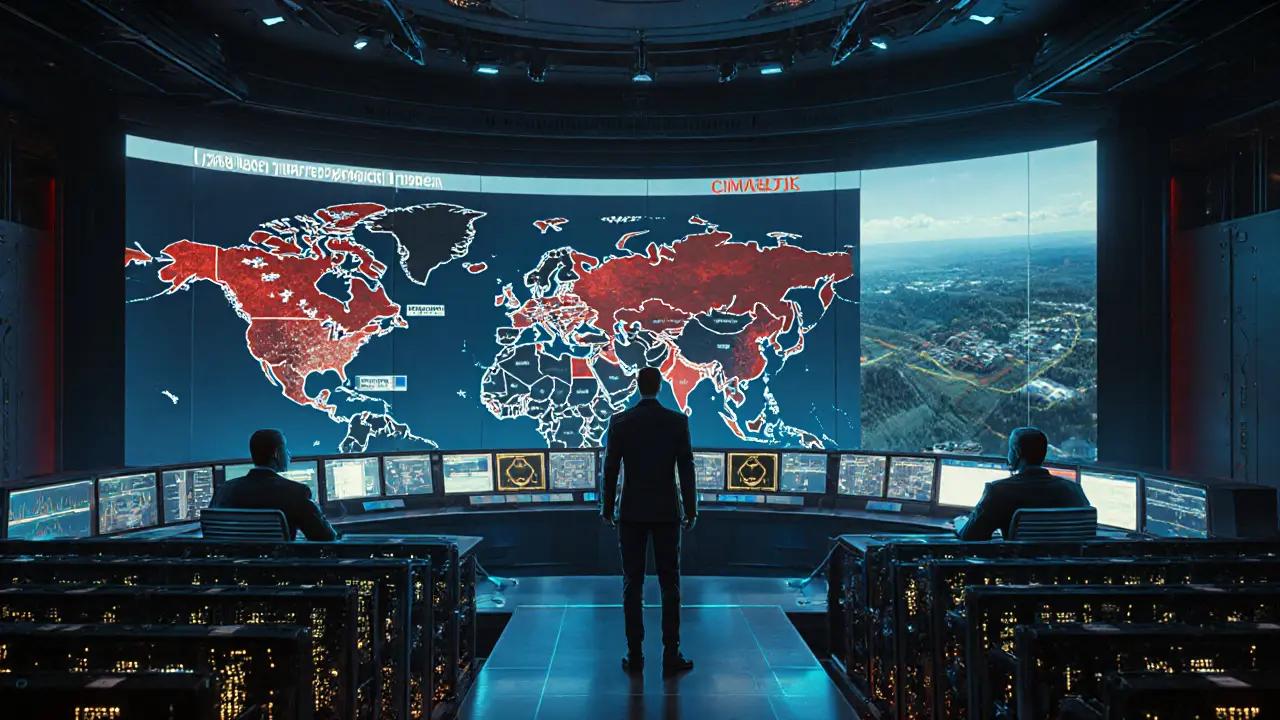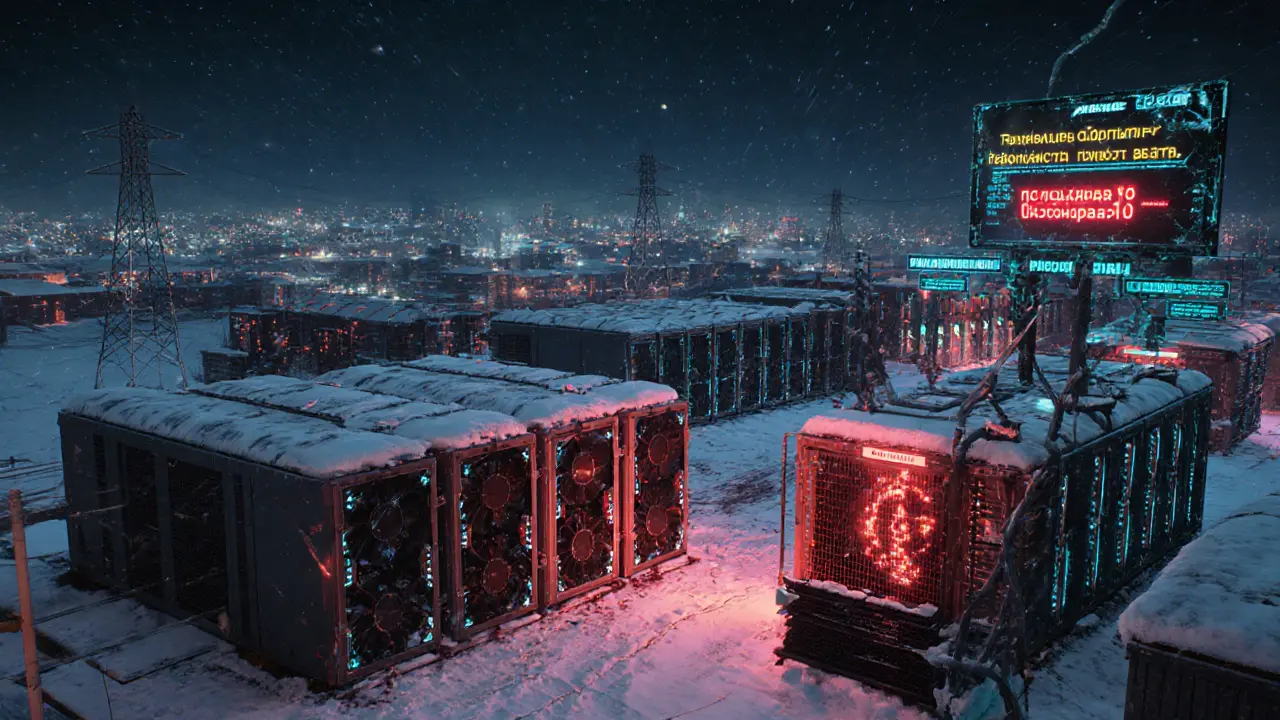Russia Crypto Mining Calculator
If you're thinking about mining cryptocurrency in Russia, you need to know one thing upfront: it's not illegal-but it's tightly controlled. Since January 1, 2025, Russia has moved from banning crypto mining to regulating it aggressively. The government doesn’t want you to stop mining. It wants to control when, where, and how you do it.
Legal Mining Is Possible-If You Follow the Rules
You can legally mine Bitcoin, Ethereum, or any other cryptocurrency in Russia, but only if you register. The Federal Tax Service runs a mandatory state registry for all mining operations. If you're a business or an individual mining at scale, you must report your equipment, electricity usage, and profits. No registration? That’s illegal mining-and you could face fines up to 2 million rubles (about $25,500).There’s one exception: if you use less than 6,000 kWh per month, you don’t need to register. That’s roughly the power draw of 10-15 high-end ASIC miners running 24/7. For hobbyists, this means you can still mine at home without paperwork. But if you add more rigs, upgrade your setup, or start making serious profits, the rules kick in hard.
Electricity Comes First-Mining Comes Last
The biggest restriction isn’t a law. It’s your place in the power line. In Russia, cryptocurrency miners are classified as fourth-category consumers. That’s the lowest priority. When the grid gets overloaded-especially in winter-authorities can shut off your miners remotely, without warning.This isn’t theoretical. In December 2024, Siberian regions like Irkutsk and Zabaikalsky saw entire mining farms go dark for days during peak heating season. Hospitals, schools, and apartment buildings got power first. Miners? They got a notification on their dashboard: “Grid overload. Shutdown initiated.”
The government uses smart meters and certified hardware to track every mining rig. If your equipment isn’t registered and labeled, it’s automatically flagged as illegal. Even if you bought your ASICs legally, if they’re not in the registry, you’re breaking the law.
Where You Can’t Mine-And When
Russia doesn’t just restrict mining-it bans it in whole regions. As of January 1, 2025, mining is completely outlawed in 10 regions:- Dagestan
- Ingushetia
- Kabardino-Balkaria
- Karachay-Cherkessia
- North Ossetia
- Chechnya
- Donetsk People’s Republic
- Lugansk People’s Republic
- Zaporizhzhia region
- Kherson region
These bans last until March 15, 2031. That’s not a typo. The government is locking in restrictions for six years.
Three other regions-Irkutsk, Buryatia, and Zabaikalsky-have seasonal bans. From November 15 to March 15 each year, mining is prohibited during peak electricity demand. This is because these areas rely on hydropower and coal, and winter heating needs spike energy use. In 2025, the ban ran from January 1 to March 15. Starting in 2026, it extended to start in November.
Why these places? They’re either energy-poor or politically sensitive. The government doesn’t want miners draining power from villages in the North Caucasus or freezing Siberian towns to keep crypto rigs running.

Profit Tax? Yes. And It’s 15%
Russia doesn’t just want to control mining-it wants a cut. Since November 2024, all mining profits are taxed at 15%. That applies to both individuals and businesses. If you mine Bitcoin and sell it for rubles, you owe tax on the difference between your electricity cost and your sale price.But here’s the catch: only about 30% of miners are registered with the tax service as of mid-2025. That means most people are still operating underground. The government knows this. Deputy Finance Minister Ivan Chebeskov admitted at the St. Petersburg Economic Forum that “another two-thirds need to be cleaned up and entered into the register.”
Fines are rising. Right now, illegal mining costs 200,000-500,000 rubles. But by late 2025, penalties could jump to 2 million rubles per rig. That’s not just a fine-it’s a deterrent.
What You Can’t Do (Even If You’re Legal)
Legal mining doesn’t mean full freedom. Here’s what’s still banned:- Using cryptocurrency to pay for goods or services inside Russia
- Not reporting crypto transactions over 600,000 rubles to the tax office
- Importing unregistered mining hardware
- Connecting to unlicensed power suppliers
You can own Bitcoin. You can trade it. You can even send it abroad. But if you try to buy coffee with it in Moscow? That’s illegal. The ruble is the only legal tender. The government is still scared of losing control over the financial system.

Why the Crackdown? Energy, Not Ideology
Russia isn’t banning crypto because it’s dangerous. It’s banning it because it’s hungry.Miners in Russia use an estimated 12-15 terawatt-hours of electricity annually. That’s more than the entire country of Bulgaria. In Siberia, where power is already stretched thin, mining rigs are seen as luxury drains. In the North Caucasus, where infrastructure is outdated, miners are blamed for blackouts.
The government’s goal isn’t to kill mining. It’s to make it predictable. By requiring registration, tagging hardware, and allowing remote shutdowns, they’re turning a chaotic underground industry into a managed utility. It’s like regulating water usage during a drought-no one gets to waste it.
Is It Still Worth It?
Yes-if you’re smart.Industrial miners in regions like Krasnoyarsk, Altai, and Omsk are still profitable. These areas have cheap hydroelectric power, low taxes, and no seasonal bans. Some operators are even signing long-term contracts with power plants to lock in rates.
But for individuals? It’s getting harder. The cost of certified hardware, registration fees, and tax compliance add up. If you’re not mining at scale, you’re better off buying Bitcoin directly than running your own rigs.
Industry experts say: if you’re going to invest in Russian mining, put no more than 5% of your portfolio into it. The risks-power cuts, fines, sudden policy shifts-are real. But the rewards? Still there, if you play by the rules.
What Happens Next?
The Russian government is watching. The digital development ministry is already testing AI systems to detect unregistered mining through electricity usage patterns. By 2026, they plan to use satellite imagery to spot large mining farms in remote areas.Expect more fines. More shutdowns. More pressure to register. The window for going unnoticed is closing fast.
One thing’s clear: Russia isn’t going back to a ban. It’s building a system where mining exists-but only if the state says so. If you want to mine here, you don’t need a permit. You need a relationship with the system.
Is crypto mining legal in Russia in 2025?
Yes, but only if you register your equipment with the state and follow energy rules. Unregistered mining is illegal and can lead to fines up to 2 million rubles. Hobbyists using under 6,000 kWh per month don’t need to register.
Can I mine crypto at home in Russia?
You can, if your monthly electricity use stays below 6,000 kWh. That’s about 10-15 ASIC miners running nonstop. If you go over that, you must register with the tax service. Even then, your power can be cut during peak demand.
Which regions ban crypto mining in Russia?
Ten regions have complete bans until 2031: Dagestan, Ingushetia, Kabardino-Balkaria, Karachay-Cherkessia, North Ossetia, Chechnya, Donetsk, Lugansk, Zaporizhzhia, and Kherson. Three Siberian regions-Irkutsk, Buryatia, and Zabaikalsky-ban mining from November 15 to March 15 each year.
Do I have to pay tax on crypto mining profits in Russia?
Yes. Since November 2024, all mining profits are taxed at 15%. You must report income from selling mined cryptocurrency. Failure to report can lead to penalties, even if your mining is registered.
Can I use crypto to buy things in Russia?
No. Using cryptocurrency to pay for goods or services within Russia is illegal. The ruble is the only legal tender. You can own, trade, or send crypto abroad, but you can’t spend it in stores, restaurants, or online shops inside the country.
What happens if my mining rig gets shut off?
If your mining equipment is connected to the national grid and the system detects high demand, authorities can remotely shut it off without notice. This happens most often in winter in Siberia and the North Caucasus. You’ll get a digital alert, but you won’t be able to override it.
Are imported mining rigs allowed in Russia?
Only if they’re registered and labeled with a state certification code. All imported ASICs and GPUs must be declared and added to the national registry. Unregistered hardware is treated as illegal equipment and can be seized.
How can I check if my mining operation is legal?
Visit the Federal Tax Service’s online portal for registered miners. You’ll need your equipment’s serial numbers and power consumption data. If you’re unsure, consult a Russian tax advisor familiar with crypto regulations. Many miners still operate in the gray zone-so getting official confirmation matters.

gary buena
November 14, 2025 AT 02:32Albert Melkonian
November 14, 2025 AT 10:19Kelly McSwiggan
November 16, 2025 AT 08:31Byron Kelleher
November 17, 2025 AT 09:43Cherbey Gift
November 19, 2025 AT 09:19Anthony Forsythe
November 19, 2025 AT 12:31Kandice Dondona
November 20, 2025 AT 19:32Becky Shea Cafouros
November 22, 2025 AT 03:49Drew Monrad
November 24, 2025 AT 00:00Cody Leach
November 24, 2025 AT 05:52sandeep honey
November 25, 2025 AT 01:32Mandy Hunt
November 25, 2025 AT 05:01anthony silva
November 27, 2025 AT 03:50David Cameron
November 28, 2025 AT 19:46Sara Lindsey
November 29, 2025 AT 04:52alex piner
November 30, 2025 AT 19:12Gavin Jones
December 2, 2025 AT 07:52